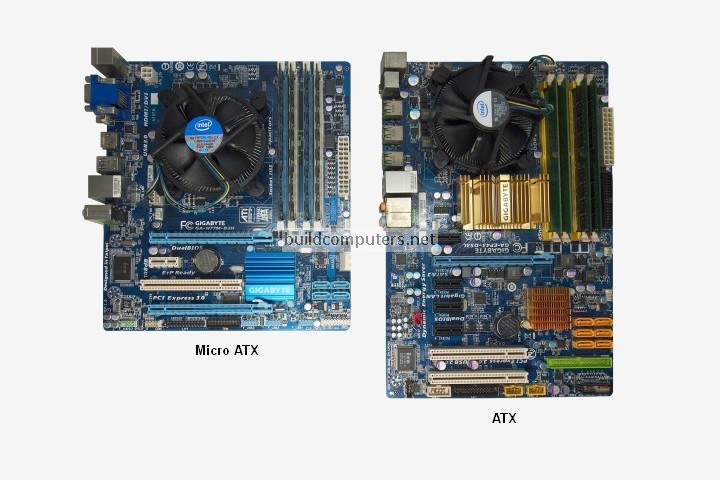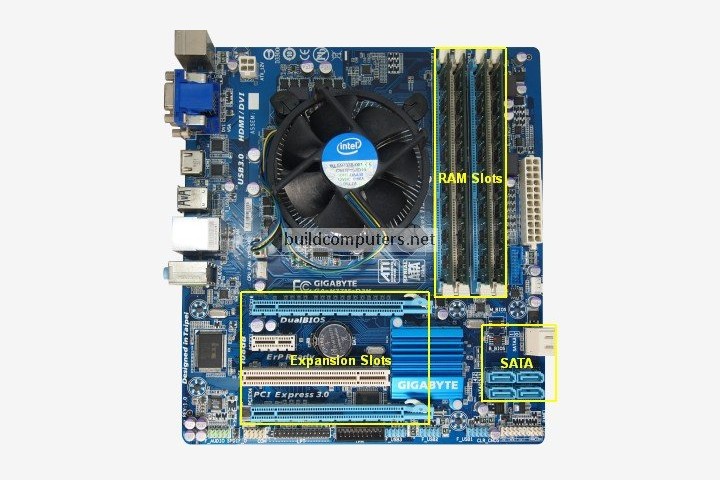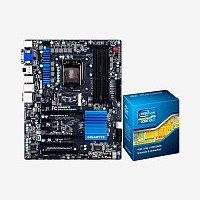Before Buying a Micro ATX Motherboard, You Should Know These Facts
What makes Micro ATX motherboards so popular for desktop computers? Find out if this form factor is right for you and how to choose a MicroATX motherboard right here.
When ATX and MicroATX (also known as mATX) motherboards were introduced back in 1995, ATX quickly took over as the most popular form factor for desktop computers while the compact Micro ATX fell by the wayside as a niche product.
Fast forward to today and things are looking quite different - In recent years, Micro ATX has been steadily replacing ATX as the preferred form factor for mainstream consumers.
Why the newfound love for MicroATX? With more and more features integrated into the CPU and motherboard chipset, a large ATX motherboard with seven expansion slots is starting to look like overkill for most people. Current motherboards don't need a dedicated sound card, and integrated graphics has evolved to a stage where it's able to match low-end discrete graphics cards.
See the image below for a motherboard size comparison between MicroATX (24.4 x 24.4 cm, 9.6 x 9.6 in) vs. ATX (30.5 x 24.4 cm, 12 x 9.6 in):

When Should You Buy a Micro ATX Motherboard?
1. You are going after the cheapest possible motherboard
With a bit of homework and bargain hunting, you will discover most of
the lowest-priced motherboards are MicroATX ones. This comes as no
surprise, since the smaller Mini ITX motherboard calls for more refined manufacturing techniques while the larger ATX board requires more components.
On
top of that, most Micro ATX cases are able to accept standard
components such as ATX power supplies and full-height expansion cards so
gives you more (cheap) choices for your other hardware as well.
That
being said, we want to add that Micro ATX motherboards come at all
price points... from the bargain basement boards to the top-end models
with all the bells and whistles.
2. You want a compact computer for flexible placement
Some people prefer to have their computers on the desk while others
rather have them sit on the floor. A Micro-ATX mini tower allows you to
do both with comfort.
The diminutive Mini-ITX case looks good on a
desk, but it's too short for you to leave it on the floor (you'll have
to do a sit-and-reach each time to turn on the computer).
And
sure, noone's stopping you from hefting a ATX full tower onto the table,
but imagine the amount of workspace it's going to take up (assuming
that your table is able to support its weight)... plus imagine the
hassle if your USB ports, audio ports and power switch are located at
the top of the case.
3. You want a computer that's good enough for most purposes
There are no official figures, but it's quite safe to say that a mATX
motherboard are able to satisfy the needs of at least three quarters of
computer users. Other than price, that's the other major reason for the
Micro ATX form factor gaining widespread popularity with mainstream
consumers.
However, being a jack of all trades also implies Micro ATX isn't the best form factor for some specific needs.
For
example, the even smaller Mini-ITX is a better choice in general if
you're building a home theater PC, NAS or a semi-portable computer. At
the other end, power users such as serious gamers, overclockers, server
admins and graphics designers will be better off with the full-sized ATX
form factor.
How to Choose the Perfect Micro ATX Motherboard
Recommended Motherboard CPU Combos
Budget Computer:
AMD Athlon 3000G CPU
Gigabyte B450M DS3H Motherboard
Mid Range Computer:
AMD Ryzen 5 3400G CPU
Gigabyte B450 Aorus M Motherboard
Gaming Computer:
AMD Ryzen 5 3600 CPU
Asus AM4 TUF Gaming X570-Plus Motherboard
Home Theater PC:
AMD Ryzen 3 3200G CPU
Gigabyte B450 I Aorus Pro Wi-Fi Motherboard
Click here for our buyer's guide to the best motherboard CPU combos.
RAM Slots
Most budget MicroATX motherboards have two RAM slots, while mid to high
end models tend to offer four slots. So should you go for four slots or make
do with just two?
The answer will depend on the intended use for your computer. We highly recommend that you read our "How Much RAM Do You Need" article for more details.
Our
general advice is to go for a motherboard with four RAM slots... Unless
budget is a big concern or you're certain that two slots will suffice for
now and the foreseeable future. You can always begin with two RAM sticks
and leave two free slots in case you need more RAM for the future.
Expansion Slots
Micro ATX mainboards can have two, three or four expansion slots. Given that
modern CPUs and motherboards come with tons of integrated features (e.g.
video, audio, network capabilities), most light to moderate users will
do just fine with two expansion slots.
What matters more (than the
number of slots) is what type of expansion slots are on the motherboard.
If possible, always try to go for PCI Express slots (unless you still
have older expansion cards that make use of the outdated PCI slots).
If
you intend to use your computer for gaming, then it's quite essential
to have at least one PCI Express x 16 slot so you can install a discrete
graphics card. Heavy gamers can go a step further and opt for Micro ATX
motherboards that support multiple graphics cards (Nvidia SLI, AMD
CrossFireX).
SATA Connectors
Every internal hard drive and optical drive requires an individual SATA connector. Modern mATX motherboards have at least four such connectors, which is enough for most users. What's more important is to make sure that you have at least one SATA 3 connector (vs. the slower SATA 2) if you intend to install a SATA 3 solid state drive.
Power Phases
In general, a motherboard with more power phases is able to deliver
cleaner and more stable power to the CPU and RAM... allowing the them to
hit higher overclocks. Having more power phases also means less load on
motherboard transistors, prolonging their lifespan.
If you
intend to overclock your CPU and RAM on a Micro ATX motherboard, it
should at least have a 4 + 2 power phase (6 + 2 is better). 4/6 here is
the number of phases for the CPU while 2 refers to the number of phases
for the memory (RAM) controller.
All the power phases in the
world is not going to matter if you don't have a high quality VRM
(Voltage Regulator Module) to begin with. To avoid substandard VRMs,
stick to reputable motherboard manufacturers: Asus, Gigabyte, ASRock,
MSI.
Others
Whenever possible, always choose Micro ATX motherboards with USB 3.0 back panel ports and/or USB 3.0 front panel connectors. They make a big difference over USB 2.0 (two to four times real-world speed improvement) when you're hooking up your computer to USB 3.0 storage devices (flash drives and external hard drives).
SEE ALSO: Recommended Motherboard CPU Combos
MOTHERBOARD GUIDE
- What is a Motherboard and How It Works
- Recommended Motherboard CPU Combos
- Motherboard Components and Parts
- Motherboard Form Factors
- How to Choose a Mini ITX Motherboard
- How to Choose a Micro ATX Motherboard
- How to Choose an ATX Motherboard
- Intel Motherboard Socket Types
- AMD Motherboard Socket Types
- The Difference Between USB 2.0 and 3.0
- How to Install a Motherboard


